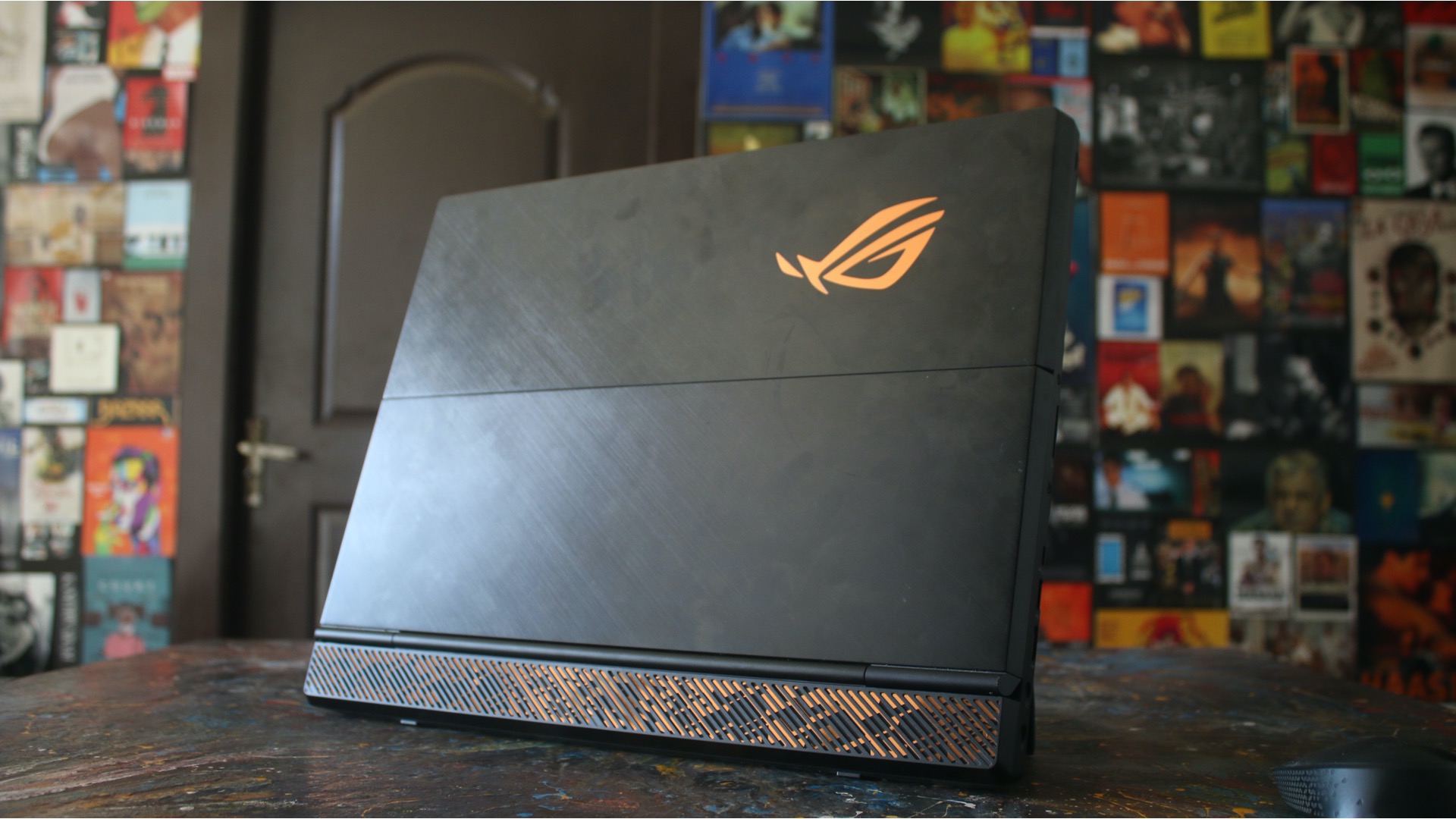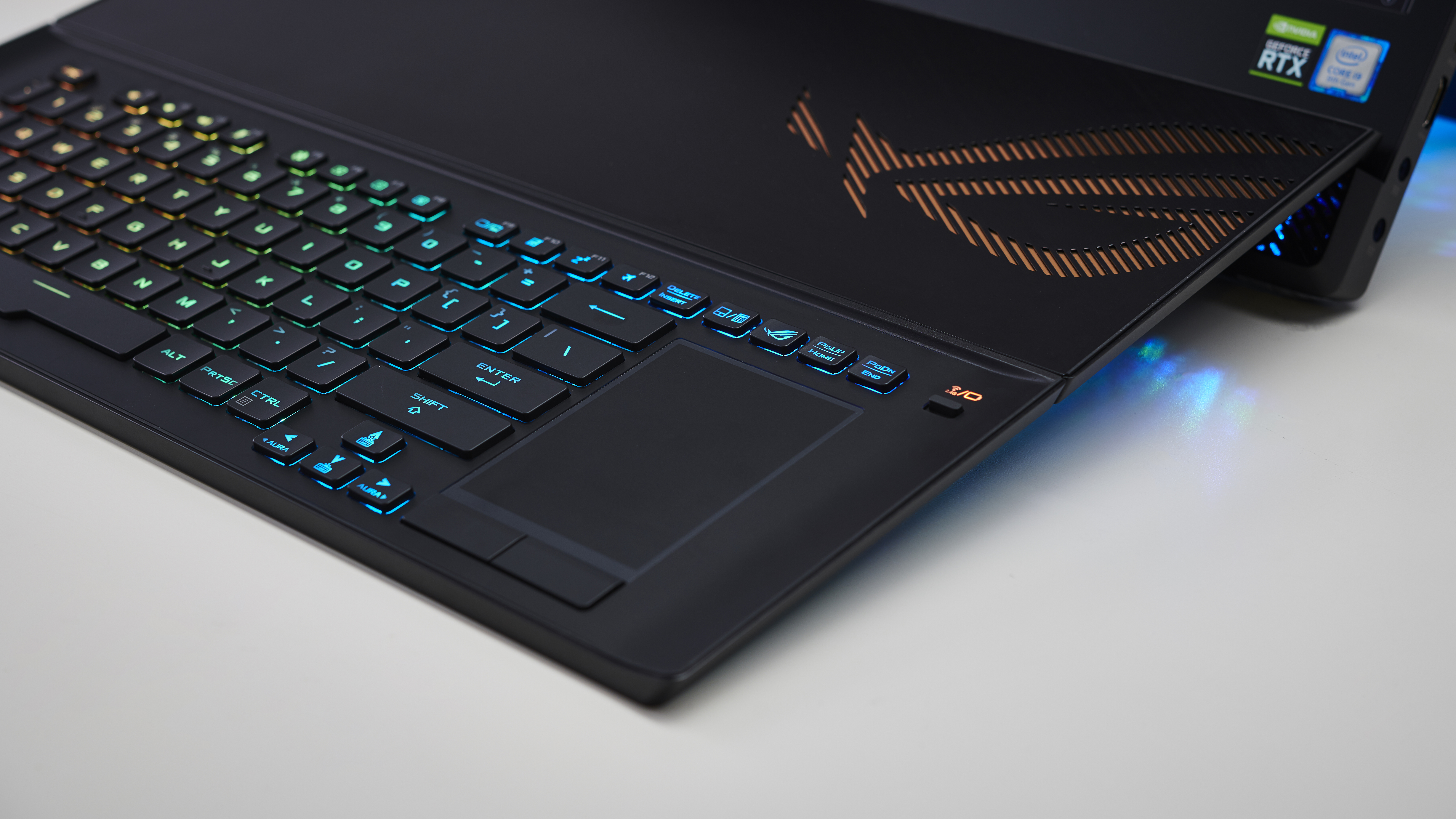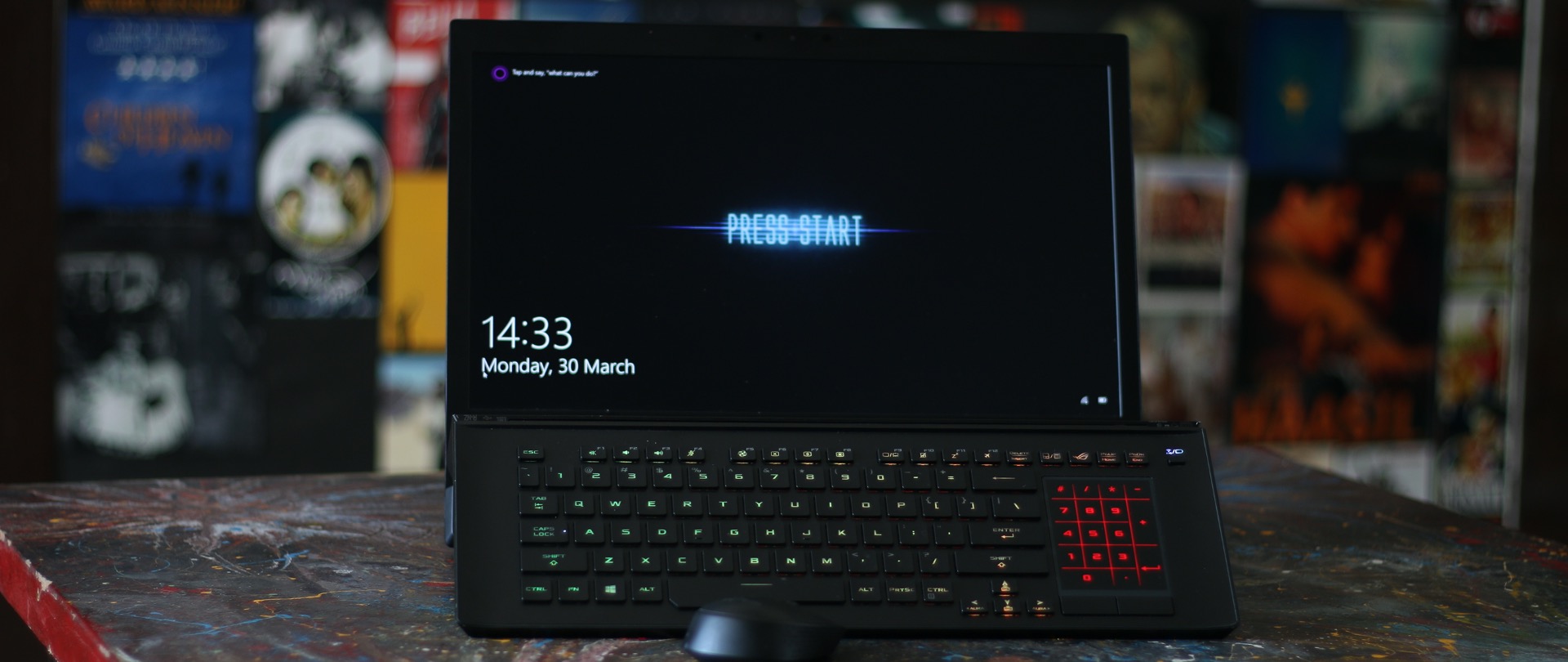TechRadar Verdict
The ROG Mothership is certainly going to turn heads wherever it’s set up, and is capable of some incredible performance beyond its wild looks. The only setbacks are its price tag and a few design choices, which makes it difficult to immediately recommend.
Pros
- +
Unique form factor
- +
Supreme Performance
- +
Plentiful ports and connectivity
- +
Runs hot easily
Cons
- -
Staggering price tag
- -
Disappointing keyboard & trackpad layout
- -
Isn't exactly portable
- -
Not available in India
Why you can trust TechRadar
Asus ROG Mothership isn’t your run-of-the-mill laptop or even a possible desktop replacement. It’s unabashedly a hybrid machine packed with top-of-the-line hardware and an equally eye-watering price. Asus has tweaked the familiar notebook form factor for better thermal management across the board and with buffed up internals, it’s one of the most fascinating looking systems out there.
Asus has been long known to make some interesting looking laptops and PCs. Their ROG lineup regularly features impressive specifications flushed with aplenty of RGB lights. The Asus ROG Mothership follows in these footsteps and might be the company’s most ambitious device ever.
While the Asus ROG Mothership has its sights set on gamers, it’s actually built like an entry-level workstation, so those looking for sheer power for intensive applications like 3D rendering or video processing may benefit from owning one of these. However, there is a catch.
Here is the Asus ROG Mothership configuration sent to TechRadar for review:
CPU: 2.4GHz Intel Core i9-9980HK (eight-core, 16MB cache, up to 5GHz Turbo Boost)
Graphics: Nvidia Geforce RTX 2080
RAM: 64GB DDR4 2666MHz (Dual Channel)
Screen: 17.3-inch FHD IPS 144Hz IPS
Storage: 3 x M.2 NVMe PCIE 3.0 512GB (RAID 0)
Ports: 3 x USB type A 3.2 Gen 2, 1 x USB type A 3.2 Gen 1. 2 x USB-type C (Thunderbolt 3 / DisplayPort 1.4), 1 x HDMI 2.0, 1 x SD card reader, Mic in, Audio combo, RJ-45, Kensington Lock
Connectivity: 802.11ax WLAN, Bluetooth 5
Camera: FHD 1080P 30FPS
Weight: 10.4 pounds (4.8 kg)
Size: 16.1 x 12.6 x 1-inch (41 x 32 x 2.99 cm; W x D x H)
Price and availability
The Asus Mothership is available, not available in India yet, at least officially. So if you find some online retailers listing it for purchase, those units may have been procured from some other region where it’s available.
Regardless of where you buy one, the Mothership is not a cheap purchase. Our review configuration is priced at a whopping $6,806 (~Rs 5,19,000). Having said that, this is a machine that will be able to manage your gaming and entertainment needs for the next four to five years, without breaking a sweat.
Design

Part laptop, part desktop, the ROG Mothership is unlike any other gaming system you have ever seen and looks very intimidating at first. It resembles a laptop only when it’s closed and lying on the table. Pick it up and hold it in an upright position, and an automatic kickstand deploys at the bottom for sturdy support.
The keyboard and trackpad form the lower lid that is connected by two pogo pin connectors and a hinge. Being a ROG branded system, the metallic chassis and Aura Sync LED lights lets it flex its gaming muscles, making it seem like an impressive desktop replacement.
Sign up for breaking news, reviews, opinion, top tech deals, and more.

The lower lid can also be detached from the Mothership and can be used wirelessly or can be connected to the machine via the included USB-C cable. Asus says that this was done to make the Mothership more adaptive to different use cases, as gamers may want to reposition the keyboard when gaming, but have it attached as usual when watching videos or browsing the web.

There are numerous ports on the machine, so connectivity isn’t going to be an issue. There are four USB Type-A ports, two Type-C Thunderbolt 3 / DisplayPort, an HDMI 2.0 port, two 3.5mm headphones and microphone jack, an SD card reader, and an RJ-45 port.

An unfortunate side effect of having this much power at your disposal is that you will need to use two power adapters to drive the Mothership up to its full potential. The machine is relatively heavy at 4.8 kilograms, so if you’re looking for portability here, there’s no way you’re going to carry this device on your back for a very long time. We tried it and can confirm that it gets unbearable after a while.
Asus claims that the upright nature of the ROG Mothership improves the machine’s cooling mechanisms, as it’s easier to funnel hot air straight up and out of the device at the top and sides. Two internal fans and a myriad of cooling pipes across the CPU and GPU help to keep temperatures in check, but a fair word of warning that the top and sides of the Mothership can get really hot under heavy usage, as the system works to expel hot air from it.
Display

Asus offers the ROG Mothership with two different types of display selection. While we know that the Mothership aims to provide the ultimate gaming experience, there are other use cases of having so much power under the hood. To that effect, the base variant of the Mothership features a 17.3-inch Full HD (1920 x 1080 pixels) resolution display with a 144Hz refresh rate, 100% sRGB, and G-Sync support. The other option is to get the top-end variant with 4K UHD panel with 100% Adobe RGB color gamut support and 60Hz refresh rate.
Our review unit was equipped with a Full HD display, which is a bit of a shame as we would have liked to see at least a 2k resolution on such a powerful machine.
Despite sporting just a Full HD display, you’ll still enjoy 144Hz refresh rates and Nvidia G-sync technologies, so gaming on the Mothership is an absolute dream come true when it comes to response times. The Full HD panel only provides sRGB support, but it’s still quite decent for video or photo editing.
Viewing angles are also fairly decent, though we imagine that most of your time will be spent looking at the Mothership head-on, rather than trying to swivel it around to show something to someone nearby.
Performance with external displays was excellent, both across HDMI and Thunderbolt 3, so those looking to use 4k displays won’t be disappointed. The Mothership was able to drive two external displays without any performance issues, so you can play around with your setup to find something that meets your gaming or design needs.
Keyboard

The keyboard is one of the most exciting features of the Mothership as it is detachable and can be used wirelessly. There’s a manual switch on the keyboard that lets you enable the wireless mode, or otherwise, the system is capable of detecting the keyboard when detached and used in wireless mode.
The keyboard feels very responsive with 2.5mm key travel to register a keystroke. It comes in really handy when gaming for long hours at a stretch. The keyboard also supports per-key RGB lighting, so you can pick a visual style that matches your preferences, or just turn off the light altogether.
When detached from the Mothership, the typing experience does turn a bit sour, since the keyboard is so flat that it makes typing slightly uncomfortable for long periods. There’s, unfortunately, no way to elevate the keyboard, so we would stick to just using it while still attached to the Mothership.
A point to note is that when the keyboard is attached, there’s an alarming amount of flex to it at the part where the hinge is attached just above the keys. We’d be quite worried if something heavy fell on this keyboard as it most certainly would cause some damage to it.
The other annoyance is the second hinge the connects the keyboard to the Asus ROG Mothership often takes a bit of fiddling to connect properly. It’s not as quick as connecting a keyboard cover to an iPad or even the Microsoft Surface, so you’re going to spend a good few seconds wriggling things about until the keyboard is seated correctly.
Asus has also built a trackpad to the side of the keyboard, which doubles as a numeric keypad. While this may be a thoughtful addition, in practice, the trackpad positioning merely is abysmal. It’s too cramped to navigate without difficulty, so you’d only end up using it in dire circumstances when you don’t have an external mouse attached.
- 1
- 2
Current page: Overview, Design and Display
Next Page Under the hood, Battery life and Final words
- Siddharth Chauhan is the Consumer Technology Reporter at Digit India. He used to work as an Assistant Editor at TechRadar India
